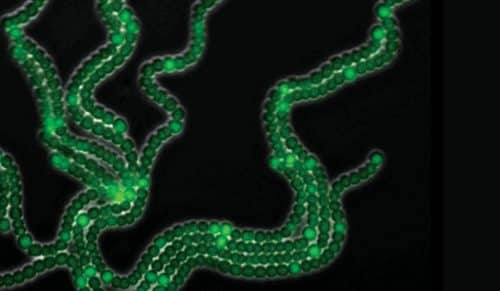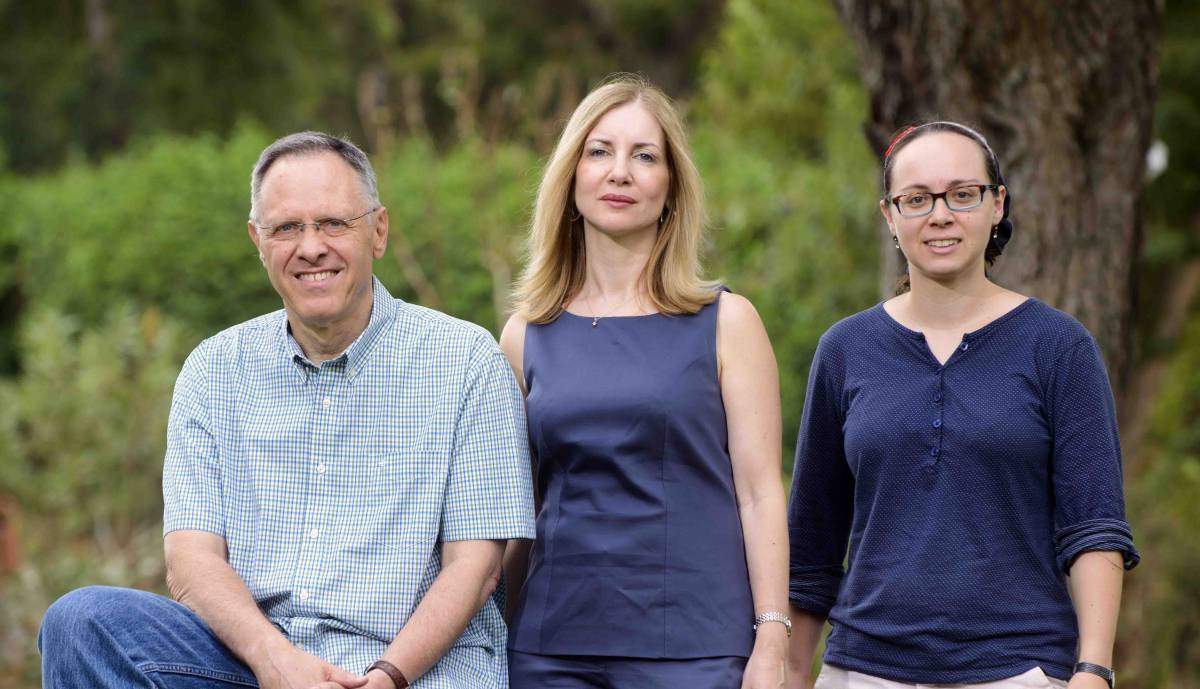Physicists and biologists teamed up to show how the fingers of the fetus develop, and how are the stripes of the zebra formed? One of the models according to which they tried to explain the development of complex biological patterns, from simple building blocks

How do the fingers of the fetus develop, and how are the stripes of the zebra formed? One of the models according to which they tried to explain the development of complex biological patterns, from simple building blocks, was the model of the British mathematician, Alan Turing. In the Turing model, each cell in the developing embryo "knows" what to do by sensing the other cells in its environment. A recently published study by scientists from the Weizmann Institute of Science and their research partners MUniversity of Florence, shows that turning Turing's elegant model into "noisy" may explain cases where the classical model does not predict the formation of developmental patterns. The research findings add to a growing body of evidence that noise not only does not interfere with the development of biological systems, but is a fundamental component of these systems.
Prof. Joel Stevens From the department of physics of complex systems at the institute, he was looking for an experimental model system, which would allow him to examine basic questions in the creation of developmental patterns. "In an ideal model system, it is possible to study each cell at each developmental stage using a limited number of parameters and a high level of control. Therefore, human embryos are not suitable for this purpose - their templates are created from hundreds of different cell types. Fruit flies, another model system commonly used in developmental research, have about 60 different cell types. For the purpose of our research we needed a biological model of a much smaller size. Fortunately, we found the system we were looking for in certain multicellular cyanobacteria."
The cyanobacteria are an array of creatures belonging to the kingdom of bacteria in nature. Long before vegetation developed on Earth, these creatures enriched the amount of oxygen in the atmosphere and fixed the nitrogen necessary for the existence of plants and animals. According to Prof. Stevens, the most important feature of these creatures is their simplicity: they are made of two basic types of cells arranged in a chain. The blue anabaena (Anabaena) studied by Prof. Stevens and his colleagues in collaboration with Prof. Ducho Panelli and his research group, is one of the earliest examples of multicellularity on Earth.

In these fortifications the cells are photosynthetic, meaning: they use sunlight to produce oxygen and store energy in the form of carbohydrates. These cells consume nitrogen to build proteins, and for that they tend to use nitrogen in its available form. In the absence of available nitrogen sources, they fix nitrogen from the atmosphere with the help of a unique enzyme. However, the oxygen that is released in the photosynthesis process damages the function of this enzyme. To deal with the internal contradiction between the two processes, a division of labor is created between the cells: a minority of them become heterocystic cells, specializing in atmospheric nitrogen fixation, while the others continue to produce carbohydrates and release oxygen in the photosynthesis process. This is how one of the simplest patterns in nature develops, which has a sequence of about 10 photosynthetic cells between every two heterocysts.
To follow the formation of the developmental patterns in these organisms, the researchers marked genes involved in the differentiation process by coupling them to reporter genes of proteins that glow fluorescently. Then, expose the cyanobacteria to low-nitrogen conditions and follow the process of differentiation into two cell types. In this process, the familiar developmental patterns were formed over time, and the cells that differentiated into heterocysts shone under the microscope.
To what extent did the observed developmental processes match the classical model? Turing's model is deterministic. According to this model patterns develop in a very narrow range of parameter values. From this it follows that fine tuning is required to allow the formation of a pattern. Despite this, the developmental patterns in these cyanobacteria are formed in a wide range of conditions, and the genetic expression observed in the cells is far from deterministic. In fact, it is very "noisy": even neighboring cells show large differences. "That's why we added random fluctuations (tiny, non-periodic fluctuations) to the Turing model, that is, noise," says Prof. Stevens. "The new version of the model is a broader description than the original model. Furthermore, no fine-tuning of parameters is required." the research group recently published her work on the "stochastic Turing model" in the scientific journal PLOS Biology.
Along with other recent work, this study suggests that these random fluctuations are at the heart of pattern development, even though we tend to think of them as predetermined. In other words, the noise is an inseparable part of the system. "In physical terms," explains Prof. Stevens, "biological systems do not reach equilibrium - they have to invest energy in accurately replicating the information from generation to generation. We see that in these systems, in addition to the cellular master plan, noise is a necessary condition for them to be able to grow and develop and produce precise shapes, internal arrangements and patterns."

6 תגובות
Miracles - do you think there is a possibility that the universe reaches a point of such complexity that it begins to disintegrate from that point, and is there a possibility that after it is completely disintegrated it will shrink again - "explode" again and we will once again experience the same universe in a new dimension?
And I asked in general - why were we born in the 21th-20st century, the universe has existed for billions of years and there must be many living beings in the universe - and we are made up of the atoms that made up the earth - and those atoms turned into molecules that slowly became complex beings and over time developed awareness.... It's supposed that atoms can develop consciousness... it's strange.
Have a good day .
Robin
Think about the fact that there is no chemistry in a very cold environment. The atoms are not in motion, so no new bonds will be formed between atoms and molecules. Heat is noise in the position of atoms.
Reality does not necessarily exist for an infinite amount of time, neither forward nor backward. The Big Bang assumes that time does have a beginning, but it is not clear whether time has an end.
There is a reason why we exist "today", and the reason is interesting.
Entropy (ie - disorder) in the universe is constantly increasing. This is the second law of thermodynamics and it is easy to see why this is true.
Complexity, on the other hand, behaves differently. In the beginning the world is simple and it becomes more and more complex - up to a certain point. After that, the complexity decreases and eventually the world becomes very simple. This is also easy to understand, and I will explain if you want.
The researchers' shirts are blue because of the blueness, the research subjects??
An interesting analogy, you (Nissim) are basically saying that the environment had to be the way it is (noisy) in order for complex life to be created... the question is - what is a "non-noisy" environment
You know, it always felt strange to me that we were born precisely in the 21st century. My meaning is (from a scientific point of view) -
The universe has existed for billions of years and reality probably exists endlessly in the timeline for both sides.... I have a hypothesis that assumes that biological beings can indeed "survive" death by replicating themselves (the culture) ... that is, we as an organism ... there is no such thing as a single one, we are all made up of DNA, bananas, monkeys, lizards, and humans
I want to prove it, but the only way I can scientifically prove this hypothesis beyond any shadow of a doubt is only if I prove that there is a "wireless" mechanism between living beings - call it "contactless remote communication"
I think it's true.. but I don't currently have proof of that.
Good Day
Robin
It actually makes sense that noise creates complexity. Try to draw a straight line with a ruler. Now - draw the line with the hand holding the ruler shaking. There you go, from a simple line to a complex line.
interesting….
In short, nature does not like being told what to do... it likes noise and chaos... and from this it creates complex patterns... strange